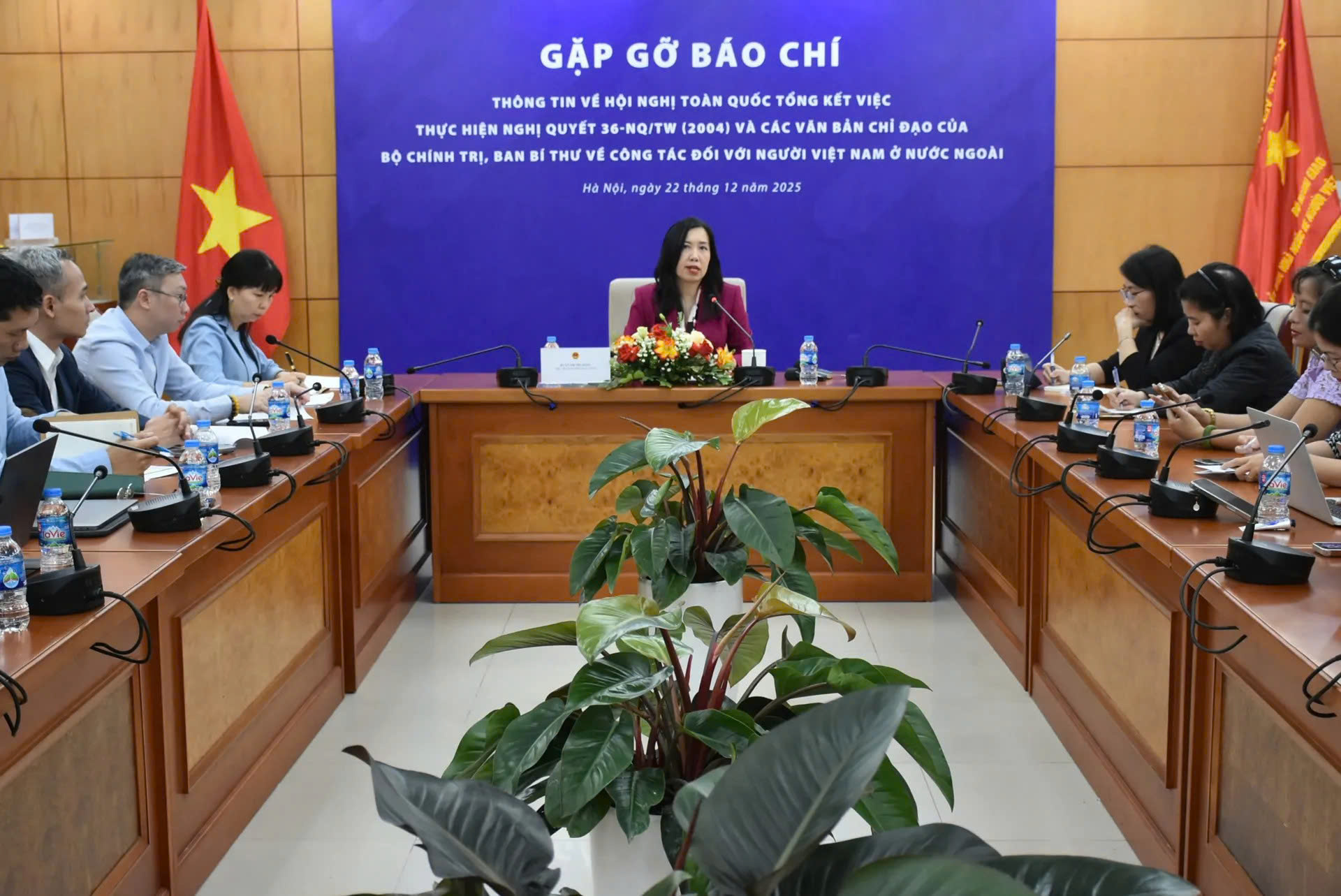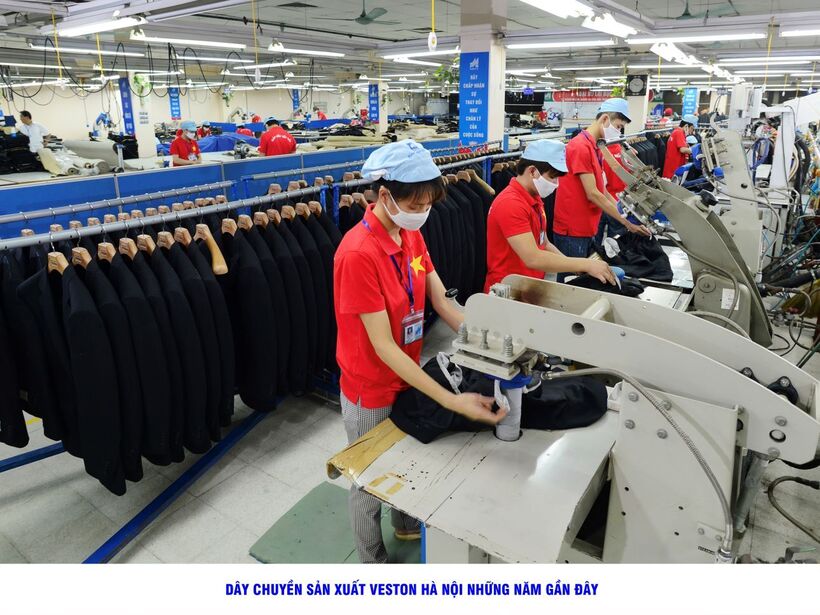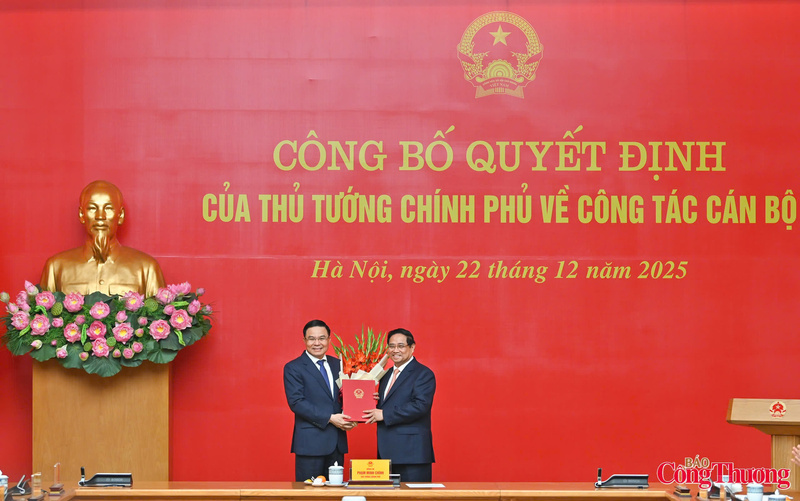
Vietnam to review over 20 years of Resolution 36 on overseas Vietnamese
19:05 | 23/03/2025 16:32 | 23/12/2025News and Events
Green transformation in manufacturing
By 2025, Vietnam aims to achieve an export turnover of 48 billion USD in the textile and garment sector, a highly ambitious target, especially amid growing global demands for sustainability and social responsibility.

May 10 proactively greens its production chain, ensuring green standards of foreign markets - photo by Thu Huong
According to Nguyen Le Tuan, Director of the Institute of Environmental Science, Seas and Islands under the Ministry of Agriculture and Environment, “The textile and garment sector is one of Vietnam’s economic pillars, contributing significantly to export revenues and creating jobs for millions. However, the industry faces an urgent need to transition in order to meet increasingly stringent environmental requirements from international markets”.
Tuan emphasized that controlling hazardous chemicals, such as Persistent Organic Pollutants (POP), is a critical issue, as these substances can pose serious risks to human health and ecosystems if not strictly managed.
To address this, the Institute is currently implementing the project “Minimizing the use and release of chemicals, including POP, in the textile sector”. This key initiative is funded by the Global Environment Facility (GEF) through the United Nations Environment Programme (UNEP).
“We plan to conduct an inventory of 120–150 textile factories to assess the use of POPs and Chemicals of Concern (CoC). The project will also pilot safer chemical alternatives for small and medium-sized enterprises, develop chemical risk mitigation guidelines, and propose policy improvements aligned with circular economy principles”, said Tuan.
Businesses take the lead in greening production
As one of the pioneers in sustainable development, Garment 10 Corporation has long established a roadmap to adopt new technologies and shift to cleaner energy sources to meet the requirements of international buyers.

Vietnam's textile and garment industry is transforming green, meeting international green standards - photo by Thu Huong
General Director Than Duc Viet affirmed that “greening” has become a necessity at every stage of the textile supply chain. “We are currently building factories based on three main criteria. First is a green production environment - our buildings are designed to meet U.S. green building certification standards. Second, we aim for eco-friendly production using recycled or environmentally safe input materials. Third, we prioritize green practices through major transitions in the use of input fuels and materials", Than Duc Viet explained.
The current global landscape presents significant opportunities for textile firms to increase the value of their export orders. The goal of greening the industry is also clearly outlined in Vietnam’s Development Strategy for the Textile and Footwear Sectors through 2030, with a vision to 2035.
However, to implement this strategy effectively, Nguyen Van Hoi, Director of the Institute for Strategic and Industrial Policy Research under the Ministry of Industry and Trade, stressed the importance of government support. “Regulatory bodies must work alongside businesses to revise and complete policies that encourage the adoption of new technologies and investments in the domestic production of input materials - many of which are still being imported,” said Hoi.
He added, “Enterprises must gain access to clean, green energy sources that align with international commitments. At the same time, authorities need to negotiate and collaborate with global partners to develop a coherent set of standards and guidelines that help businesses better align with international markets. Government agencies must play a vital role in providing information and support to help businesses meet green requirements and ensure traceability throughout the production process, as demanded by international buyers”.
In Vietnam, the shift toward green factory construction is gaining momentum, with 69 facilities currently certified as green buildings. However, this number remains modest given the textile industry’s major contribution to the national economy.
The transition to green manufacturing models in the textile and garment industry will play a pivotal role in advancing Vietnam’s sustainable development goals. It aligns with global trends and meets the expectations of international partners seeking to minimize environmental impact.

19:05 | 23/03/2025 16:32 | 23/12/2025News and Events

19:05 | 23/03/2025 16:30 | 23/12/2025Trade

19:05 | 23/03/2025 23:26 | 22/12/2025Industry

19:05 | 23/03/2025 23:19 | 22/12/2025News and Events

19:05 | 23/03/2025 14:41 | 22/12/2025News and Events